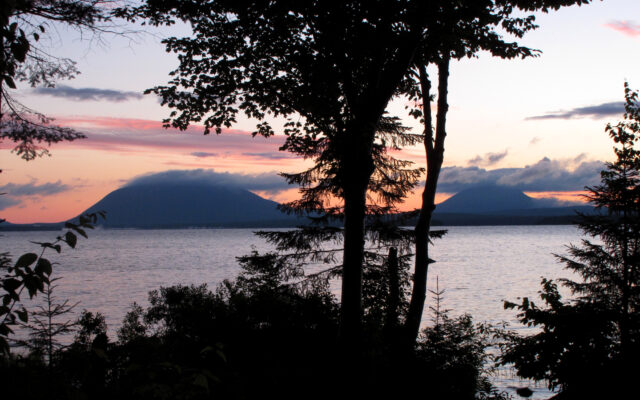
Why there are Maine townships named for defunct Massachusetts high schools
By Emily Burnham, Bangor Daily News Staff
This question came to me from the Bangor Daily News’ new director of news and audience, Dan Dinsmore, who wanted to know why there’s a place in Aroostook County called North Yarmouth Academy Grant Township, which is really quite an odd name for a town. Turns out, there’s lots more where that came from!
Why are there townships in Maine named for schools, canals and bridges?
In Maine, one of our preferred terms for an area that’s way off the beaten path is to refer to something like T2 R40 or T9 R13. You know — one of those townships out in the boonies, where bears and moose far outnumber humans. The hinterlands. The willywags. Way the frig out there, guy.
Most of those townships and unorganized territories have those numbered names — almost the entire northwestern quadrant of Maine looks like a sea of numbers on a map — but many of those a little closer to civilization actually have been named something, rather than given a numerical identifier.

MOOSEHEAD SUNRISE – The sun rises over Spencer Bay on Moosehead Lake in Lily Bay.
And while some of those names are charming and strange, like Enchanted, Rainbow and Misery townships, others have names that seem clearly connected to real places, either still in existence or long gone, like schools, bridges and canals.
In most cases, those grants named after schools can be traced back to the very early part of the 19th century, when Maine was still a part of Massachusetts. According to scholars at the Osher Map Library at the University of Southern Maine, after the Revolutionary War was over, Massachusetts was in major debt. To pay off some of the debts, it sold huge tracts of land to private buyers, like the 1 million acres along the Kennebec River sold to William Bingham, for whom the town in Maine is named.
Massachusetts also used the vast swaths of land in what would become Maine as a means to support educational institutions and infrastructure improvements. The state donated tracts of land to schools and to projects, which the organizations could then either subdivide and sell to private landowners, or, at the time, make money off timber resources.
One such place is North Yarmouth Academy Grant Township in Aroostook County, given to the private school founded in 1814, and which today actually lies in the town of Yarmouth, not the town of North Yarmouth. Saco Academy Grant Township — named for the school that today is known as Thornton Academy — is another, as are the townships given to Bowdoin College, all of which are in Piscataquis County and all of which were donated in the 1810s, the decade before Maine seceded from Massachusetts in 1820.
Others, like the Days Academy Grant Township and the Pittston Academy Grant Township, appear to be named for schools that no longer exist, and for which there’s little historical record and which may have been located in what is today Massachusetts.
There are lots of townships in Maine named for schools in Massachusetts, in fact, like the townships named for Taunton Academy, Raynham Academy, Hopkins Academy and Sandwich Academy. Out of those four schools, only one still exists — Hopkins Academy, in the town of Hadley, which is the fourth-oldest high school in the country, with the longest continually operating charitable trust.
There are even two townships (an East and a West, by Moosehead Lake) named for the Middlesex Canal, a 27-mile barge canal that connected the Merrimack River with the Port of Boston. When construction started on the canal in 1790, it was the first major civil engineering project of its type in U.S. history, and was one of the models for later projects like the Erie Canal. It was decommissioned in 1851, after railroads became a much more efficient means of transporting goods.
Still other, smaller tracts were given to organizations and projects like the Massachusetts Medical Society, and the construction of the Saco Free Bridge. Neither of those townships actually exist anymore, and the Saco Free Bridge, which spanned the Saco River, was demolished in the 1850s. The Massachusetts Medical Society very much still exists, however, though the group sold its interest in the land in the 1840s.
In fact, there are likely many more land grants of these types in various sections of the Maine wilderness, each with their own unique namesakes. They’re all mostly privately owned these days, either by individuals, timber or paper companies, sporting camps or conservation organizations, and just like they were more than 200 years ago, virtually no humans permanently live in any of them. If there’s one thing Maine’s got a lot of, it’s willywags.